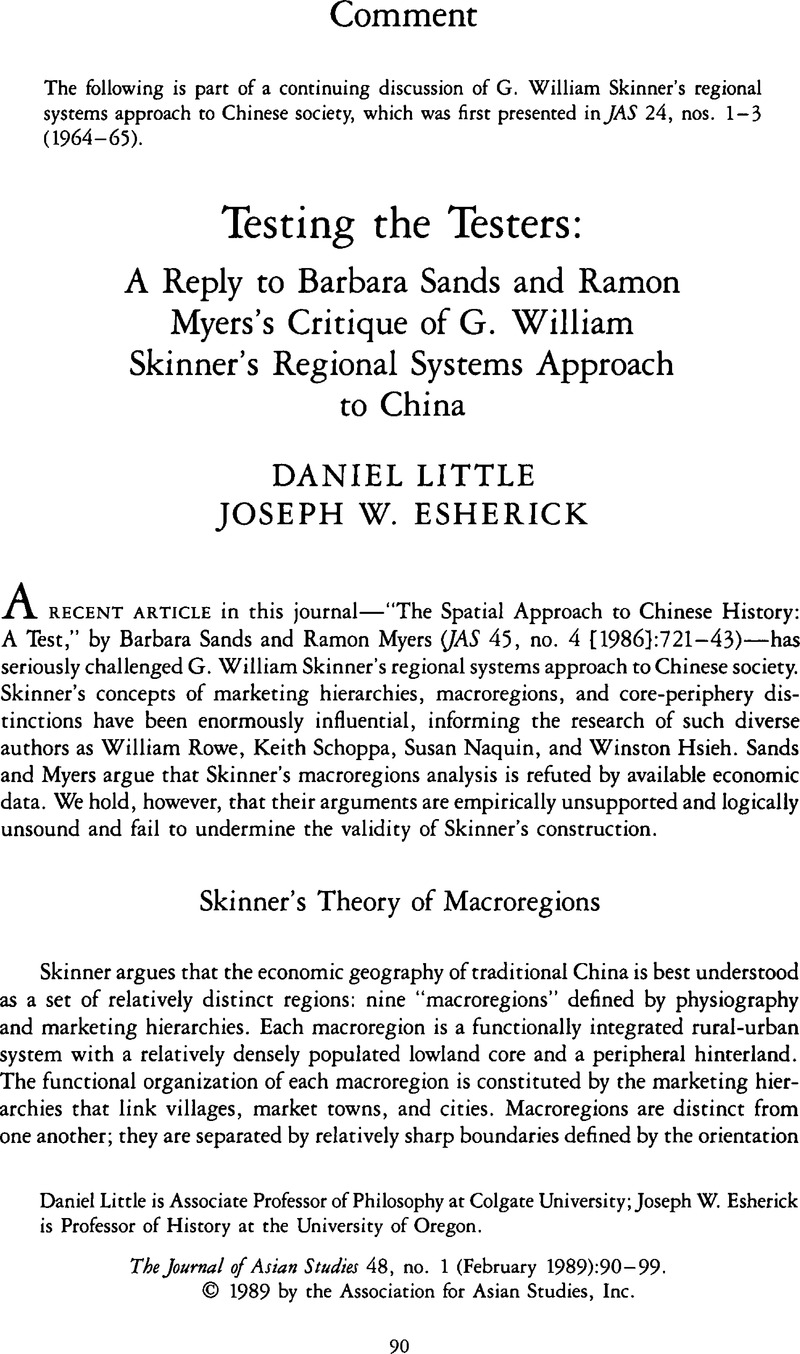Crossref Citations
This article has been cited by the following publications. This list is generated based on data provided by Crossref.
Sands, Barbara
and
Myers, Ramon
1990.
Economics and Macroregions: A Reply to Our Critics.
The Journal of Asian Studies,
Vol. 49,
Issue. 2,
p.
344.
Lavely, William
Zhenyu, Xiao
Bohua, Li
and
Freedman, Ronald
1990.
The Rise in Female Education in China: National and Regional Patterns.
The China Quarterly,
Vol. 121,
Issue. ,
p.
61.
Lavely, William
Lee, James
and
Feng, Wang
1990.
Chinese Demography: The State of the Field.
The Journal of Asian Studies,
Vol. 49,
Issue. 4,
p.
807.
Siu, Helen F.
1990.
Recycling Tradition: Culture, History, and Political Economy in the Chrysanthemum Festivals of South China.
Comparative Studies in Society and History,
Vol. 32,
Issue. 4,
p.
765.
Lewis, Martin W.
1991.
Elusive Societies: A Regional-Cartographical Approach to the Study of Human Relatedness.
Annals of the Association of American Geographers,
Vol. 81,
Issue. 4,
p.
605.
Cartier, Carolyn
2002.
Origins and Evolution of a Geographical Idea.
Modern China,
Vol. 28,
Issue. 1,
p.
79.
Vink, Markus
2004.
From Port-City to World-System: Spatial Constructs of Dutch Indian Ocean Studies, 1500-1800.
Itinerario,
Vol. 28,
Issue. 2,
p.
45.
Thornton, Patricia M.
2012.
Mapping dynamic events: popular contention in China over space and time.
Annals of GIS,
Vol. 18,
Issue. 1,
p.
31.
Brown, Melissa J.
Satterthwaite-Phillips, Damian
and
Porter, Dorothy
2018.
Economic correlates of footbinding: Implications for the importance of Chinese daughters’ labor.
PLOS ONE,
Vol. 13,
Issue. 9,
p.
e0201337.



